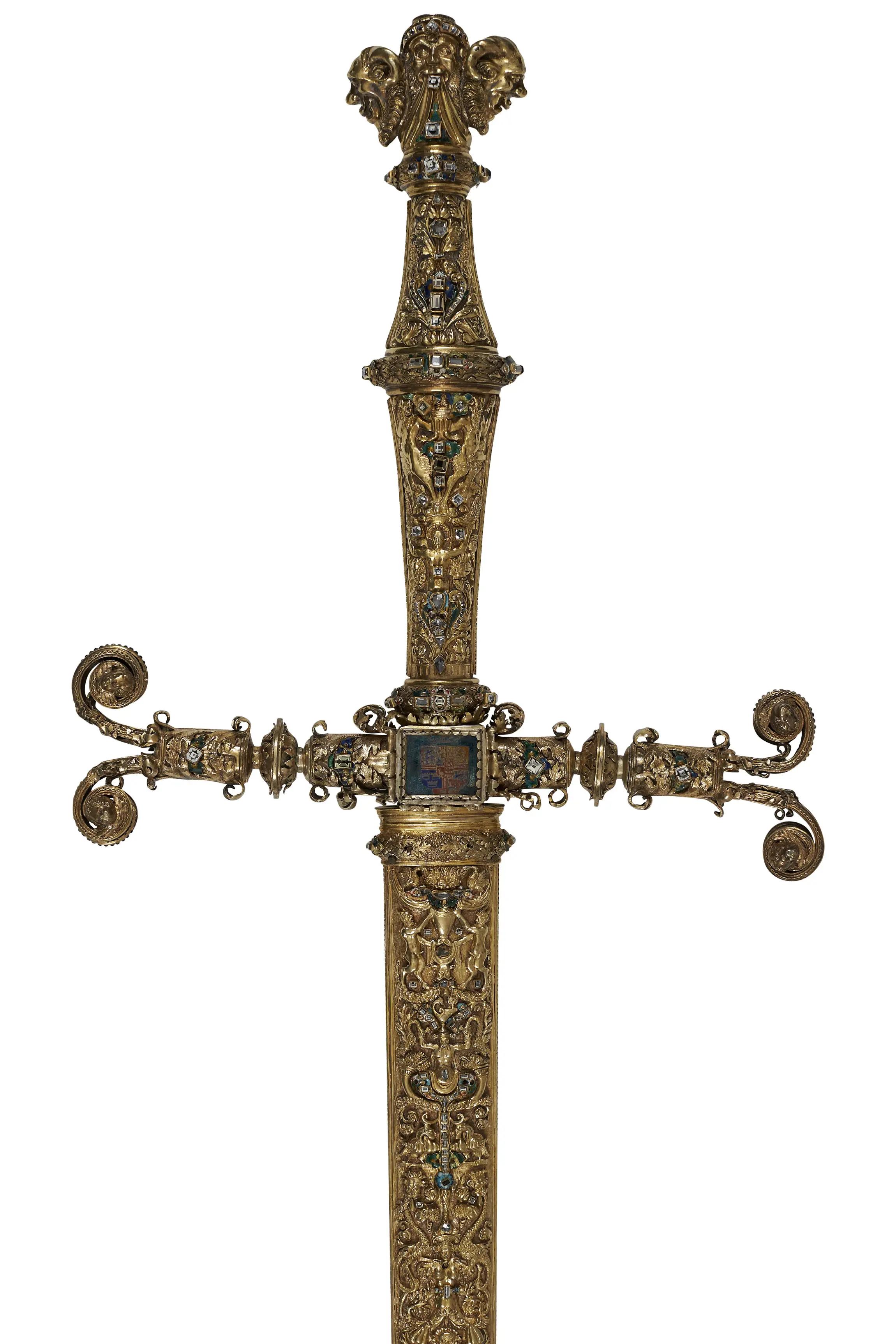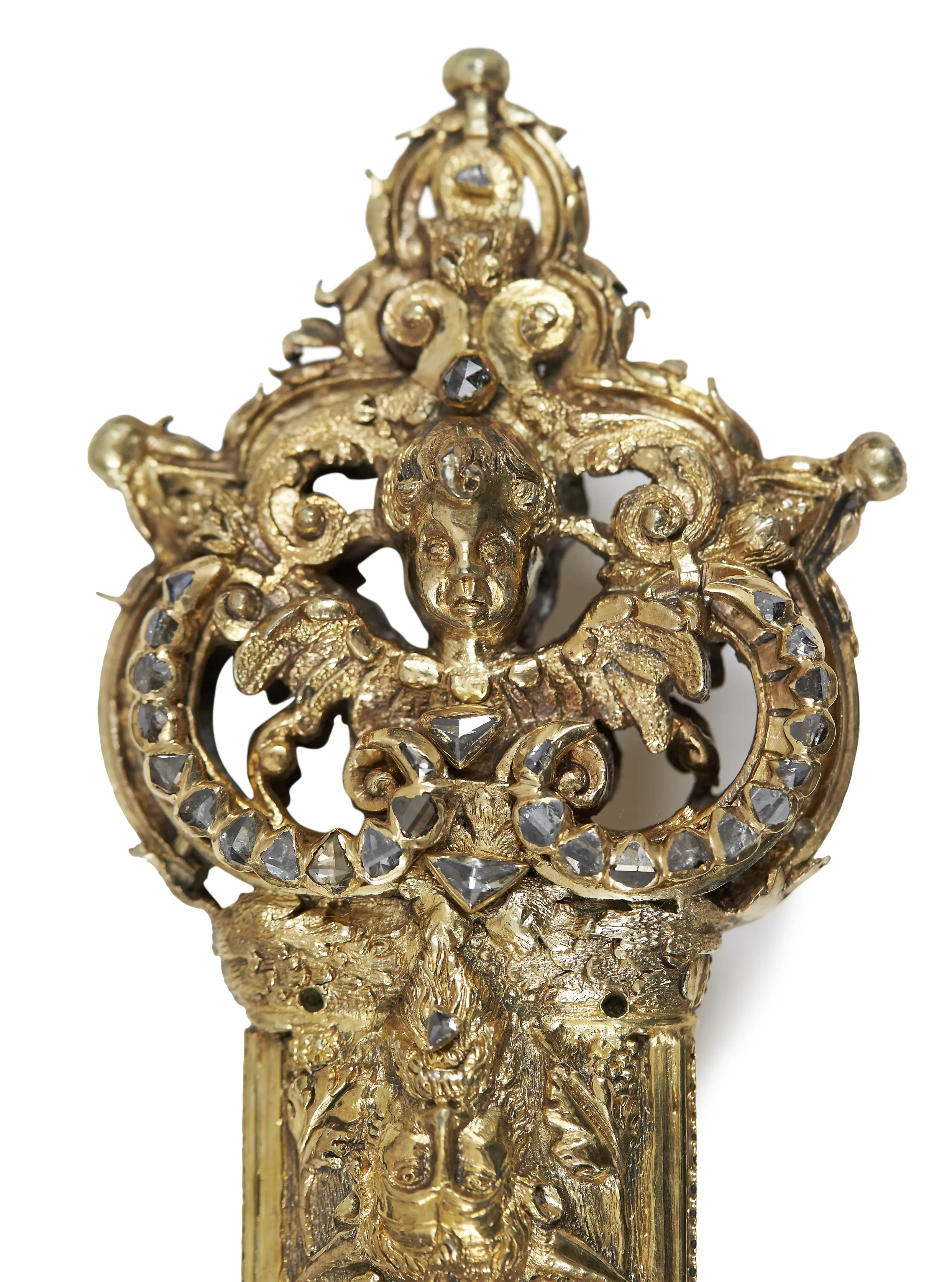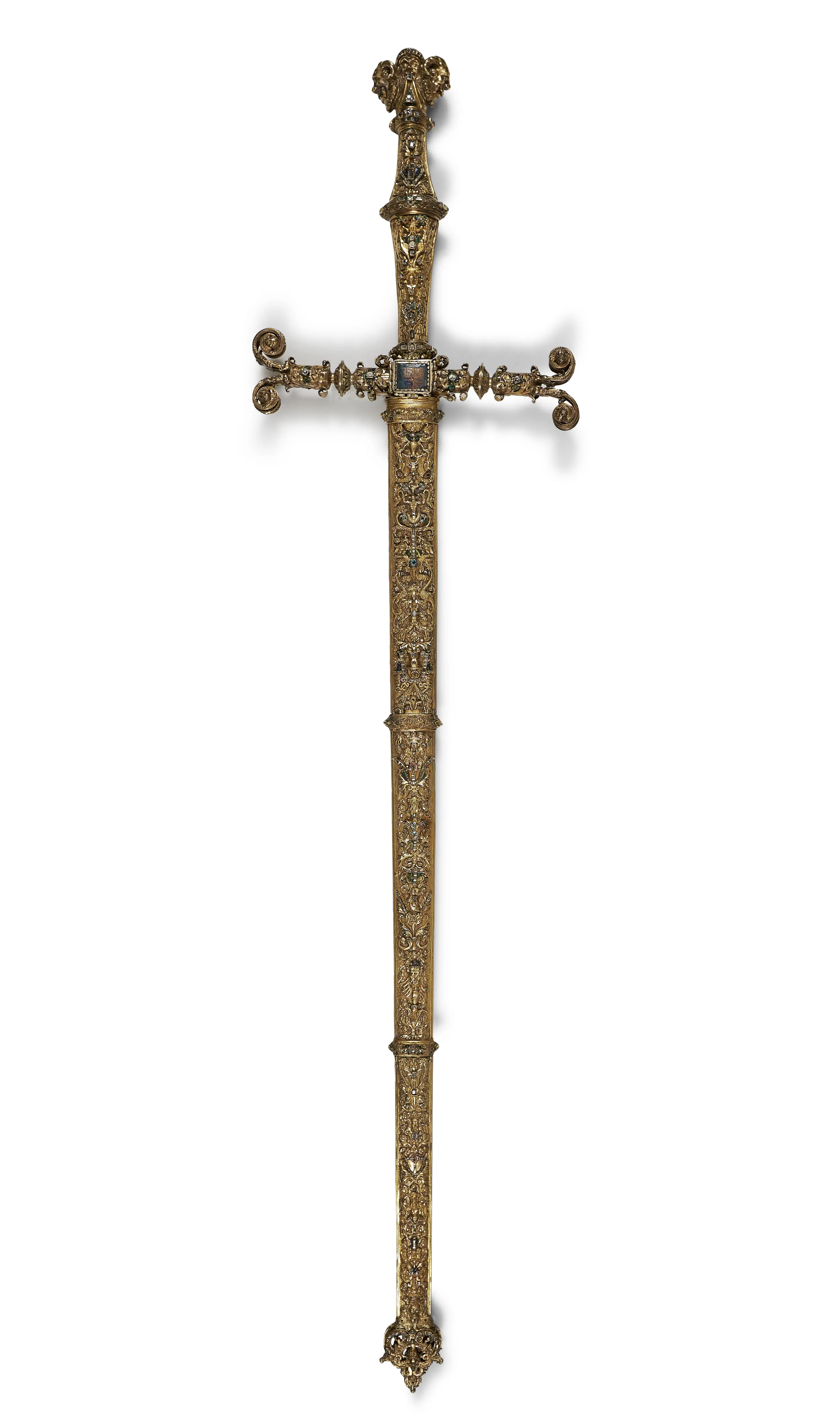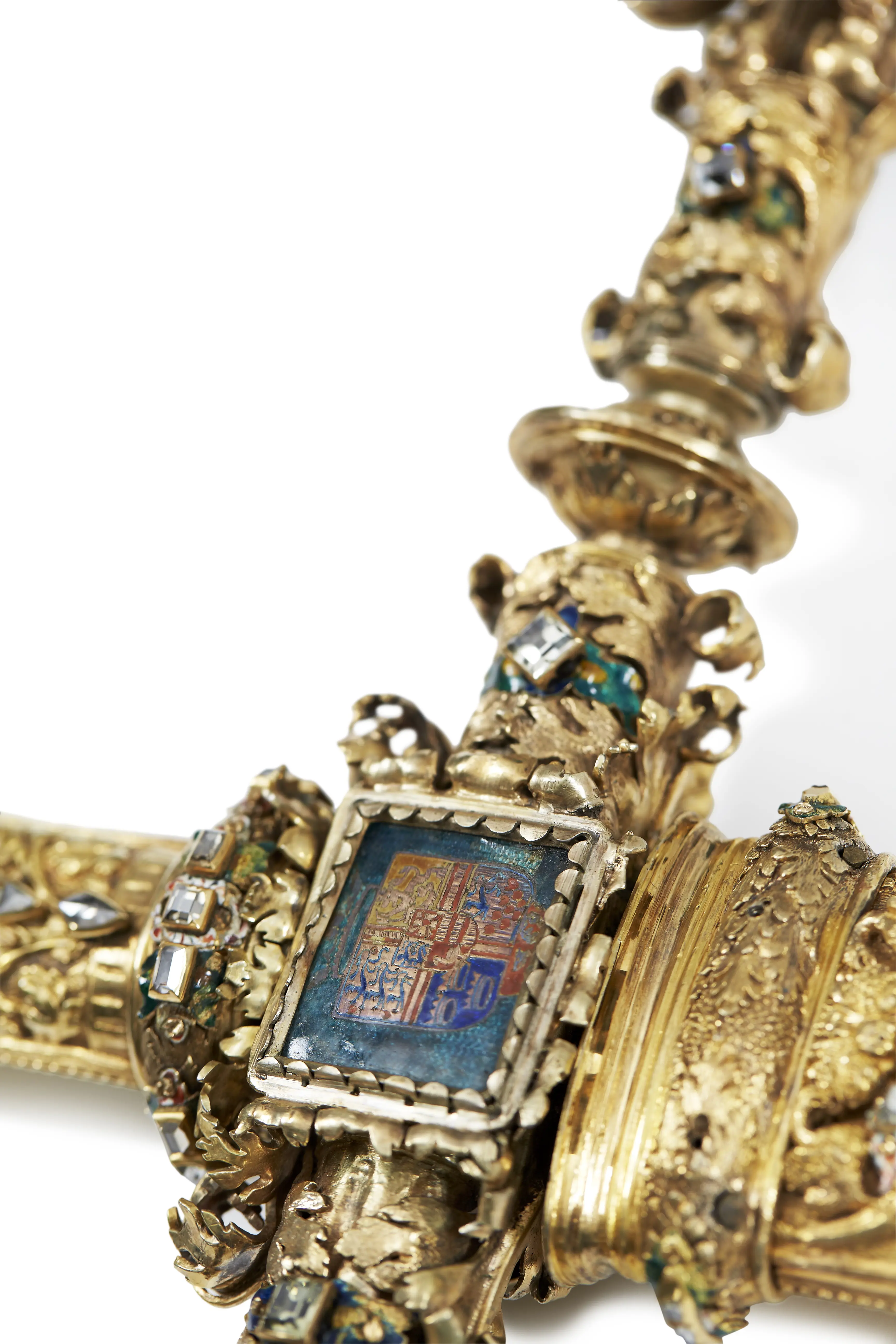Christian III's sword of state
In 1551, Christian III commissioned an imposing sword of state to be used in the coronations of Danish kings.
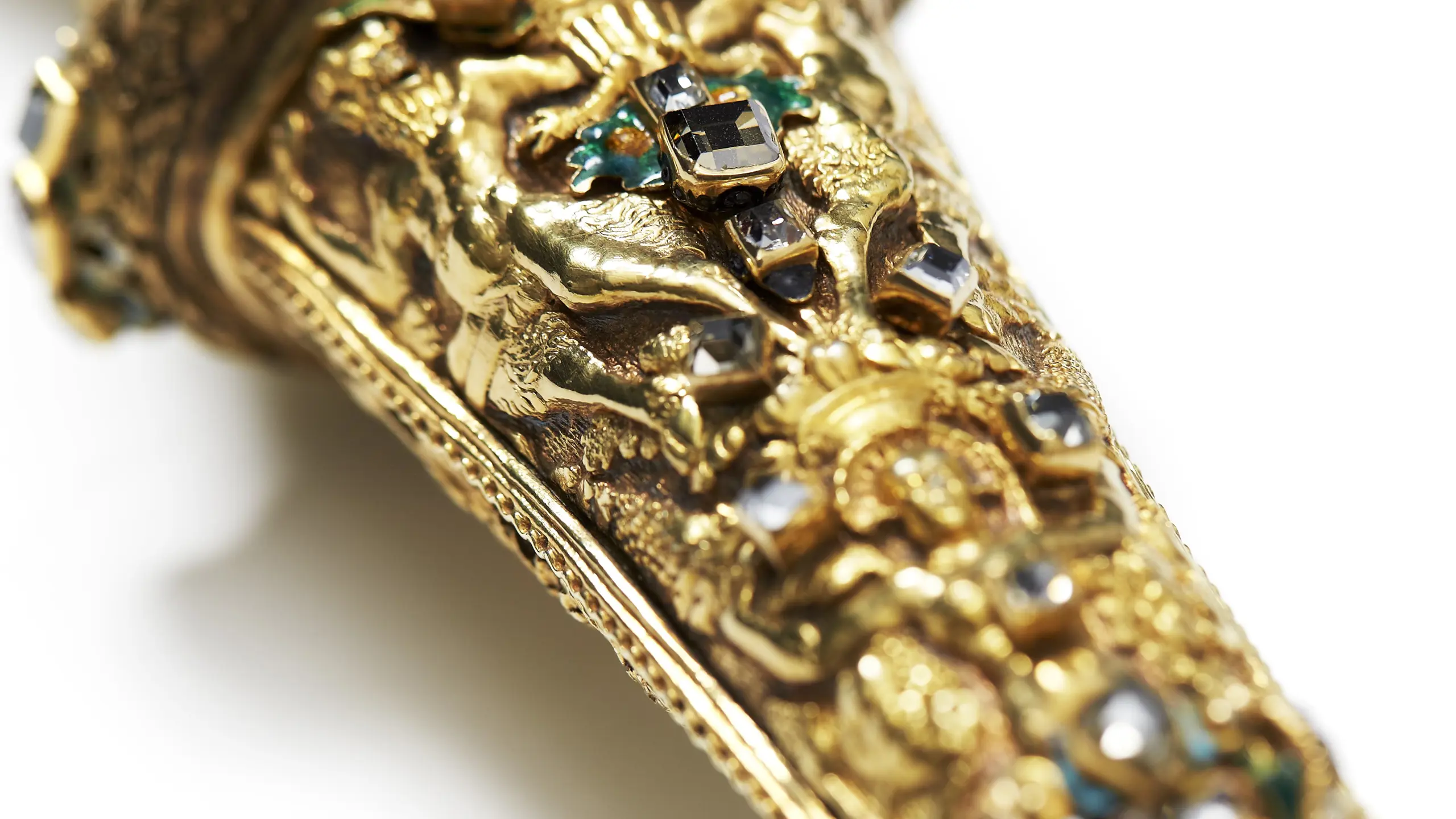
In 1551, Christian III commissioned a truly imposing sword of state. The sword is more than one metre long and so heavy that it takes two hands to wield it.
First, the King is handed the sword of state
At this time in history – before the introduction of absolutism in 1661 – the Danish monarch was crowned in a religious ceremony. During this event, the King was handed the sceptre, the orb and the sword of state. The ceremony culminated when the crown was placed on the King's head. The sword of state was the first of the regalia to be handed to the King, who immediately drew the heavy sword and pointed it towards the four corners of the world. With this ritual act, the King demonstrated his determination to defend his realm.
The sword of state is one metre long and so heavy that it takes two hands to wield. The hilt and the scabbard are made of silver-gilt and lavishly decorated with diamonds and the Danish coat of arms in enamel.
The sword of state in use
The sword of state was first used at the coronation of Christian III's son Frederik II, in 1559. The last time it was used was just under 100 years later, at the coronation of Frederik III, in 1648. When the first absolute king, Christian V, took to the throne, in 1671, Denmark had become a hereditary monarchy, and the coronation ceremony was no longer necessary. However, new kings were still anointed with consecrated oil as a sign that his reign was blessed by God.
Today, the sword of state is on display in the Treasury under Rosenborg Castle.
